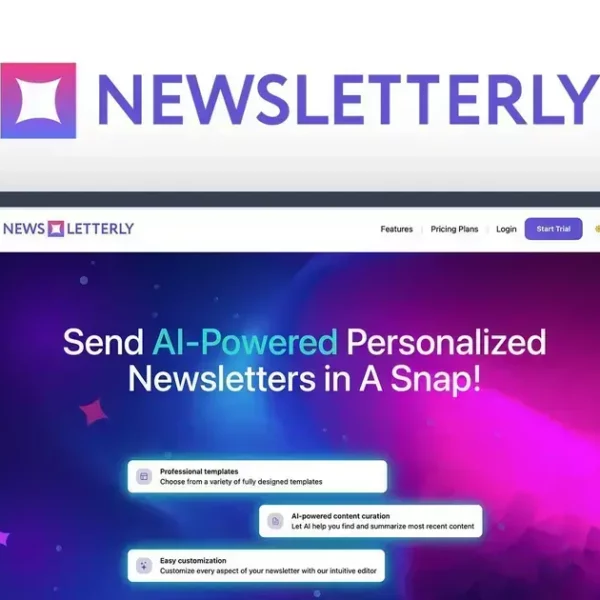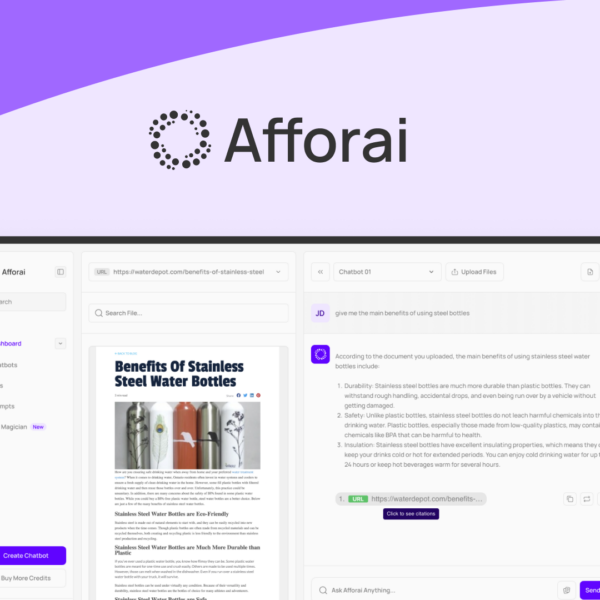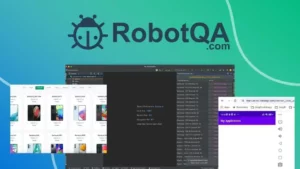To create a successful platform, focus on understanding your audience, building user-friendly design, and implementing effective engagement strategies. Avoid common pitfalls such as neglecting mobile compatibility and performance measurement, while considering monetization options to ensure sustainability.
Creating a platform that truly engages users is essential in today’s digital landscape. Whether you’re building a social media site, an e-commerce hub, or a content-sharing platform, understanding the nuances can significantly impact your success. In this guide, we’ll delve into each aspect that makes up a successful platform, from essential features to monetization strategies, so you’re fully equipped to embark on your journey.
Understanding the Basics of Platform Creation
Creating a platform involves several foundational steps that are essential for its success. Understanding the basics will empower you to build something that truly resonates with users. First, you need to identify your target audience’s needs and preferences. This insight will guide your platform’s design and functionalities.
Defining Your Objective
Clearly define the purpose of your platform. Is it to connect users, sell products, share content, or offer a service? Your primary objective will influence the structure and features you implement.
Choosing the Right Technology
Selecting the appropriate technology stack is crucial for the functionality and scalability of your platform. Consider factors like user traffic, required features, and your team’s expertise with various technologies.
User Experience (UX) Design
A strong focus on user experience is vital. Design your platform to be intuitive and user-friendly, making navigation easy. A well-designed interface will encourage users to engage more with your platform.
Building and Testing
Start developing your platform with an iterative approach. Build a minimum viable product (MVP) first, and then test it with real users. Gather feedback and make improvements based on user interactions.
Launching Your Platform
Finally, have a launch strategy in place. Promote your platform through various channels to attract users. Monitor performance closely after launch and be ready to make adjustments as needed.
Key Features to Consider When Creating a Platform

When you set out to create a platform, several key features are essential to ensure that it attracts users and serves its purpose effectively. Understanding these features helps you build a strong foundation for your platform.
User Registration and Profiles
Allowing users to register and create profiles is vital. This feature helps build a community and enables personalization. Users should be able to easily sign up and log in, keeping their data secure.
Search and Navigation
A robust search function and clear navigation are critical for a good user experience. Users should be able to find what they need quickly. Consider implementing filters and sorting options to enhance search functionality.
Content Management System (CMS)
Incorporating a CMS enables you to manage the content efficiently. You can create, edit, and organize content on your platform without relying on complex coding. This flexibility is essential for keeping your platform fresh and engaging.
Communication Tools
Integrating communication tools like chat, forums, or messaging systems can enhance user engagement. These tools allow users to connect with each other, fostering a sense of community within your platform.
Analytics and Reporting
Implementing analytics tools is crucial to track user behavior and engagement. These insights help you understand what works well and what needs improvement. Regular monitoring can guide your platform’s growth strategy.
How to Foster User Engagement Effectively
Fostering user engagement effectively is essential for the success of your platform. Engaged users are more likely to return, interact, and even promote your platform through word of mouth. Here are several strategies to encourage greater user involvement.
Understand Your Audience
Start by understanding who your users are and what they need. Conduct surveys or gather feedback to learn about their interests. This insight allows you to tailor content and features that resonate with them.
Create Valuable Content
Regularly publish fresh and relevant content to keep users interested. Offer them valuable information, entertainment, or unique insights that make them want to return. Incorporating different content formats like videos, blogs, and podcasts can also engage a wider audience.
Interactive Features
Add interactive features such as polls, quizzes, and comment sections. These elements encourage users to participate actively rather than passively consuming content. Consider gamification strategies, where users earn rewards or badges for specific actions.
Build a Community
Encourage users to connect with one another by fostering a community atmosphere. Implement forums or discussion groups within your platform. This gives users a place to share ideas, ask questions, and build relationships.
Regular Communication
Keep in touch with your users through newsletters and updates. Highlight new features, content, or community events. Personalized emails can make users feel valued and encourage them to engage more. Prompt users to provide feedback and respond to their inquiries to show that their voices matter.
Strategies for Monetizing Your Platform

Monetizing your platform is a crucial step to ensure its sustainability and growth. Below are several effective strategies to consider when looking to generate revenue from your platform.
Subscription Models
Implementing a subscription model can provide consistent revenue. Offer different tiers with varying levels of access and features. This allows users to choose a plan that fits their needs and budget, encouraging long-term commitment to your platform.
Advertisement Space
Consider offering advertising space on your platform. Partner with relevant businesses to display their ads. Ensure that ads are not intrusive and don’t detract from user experience. You can implement pay-per-click or pay-per-impression models to maximize income.
Affiliate Marketing
Joining affiliate programs allows you to earn commissions by promoting other companies’ products or services. Include affiliate links within your content, and when users make purchases through these links, you earn a percentage. This can be an effective revenue stream as long as it aligns with your platform’s content.
Premium Content
Offering exclusive content for a fee can attract dedicated users. This could include ebooks, webinars, or specialized articles that provide additional value. Highlight the benefits of this premium content to encourage users to upgrade.
Donations and Crowdfunding
If your platform offers free content, consider asking for donations. Platforms like Patreon allow supporters to contribute to your platform in exchange for exclusive rewards. Crowdfunding can also be used for specific projects, helping you engage your community while generating funds.
Common Pitfalls to Avoid When Creating a Platform
Avoiding common pitfalls is essential for successfully creating a platform. Many new developers fall into similar traps that can hinder their project. Here are some critical mistakes to steer clear of.
Neglecting User Research
Skipping the initial research on your target audience is one of the biggest mistakes. Without understanding what users want and need, your platform may not resonate with them. Always conduct surveys or interviews to gather insights before starting.
Overcomplicating the Design
A complex design can confuse users and drive them away. Focus on a simple, user-friendly interface that allows easy navigation. Prioritize essential features and eliminate anything that does not add value.
Ignoring Mobile Compatibility
With many users accessing platforms on their mobile devices, ignoring mobile compatibility can be a major mistake. Ensure that your platform is responsive and functions well on various screen sizes. A seamless mobile experience can boost user engagement significantly.
Underestimating Maintenance Needs
Many developers underestimate the level of ongoing maintenance required. Keeping your platform running smoothly with regular updates, security patches, and bug fixes is essential. Allocate resources for maintenance to ensure long-term success.
Failure to Measure Performance
Not tracking the performance of your platform can lead to missed opportunities for improvement. Use analytics tools to gather data on user behavior and engagement. This information is crucial for making informed decisions and adjustments.
In Summary, Building a Successful Platform
Creating a platform is a journey that requires careful planning and execution. By understanding the basics, focusing on key features, and implementing effective user engagement strategies, you can set your platform up for success.
Avoiding common pitfalls such as neglecting user research and underestimating maintenance needs is essential. By staying attentive to your audience and continuously improving your platform, you can create a thriving digital environment.
Remember, the ultimate goal is to engage users, provide value, and build a community. With the right approach, your platform can achieve lasting success and impact.
FAQ – Frequently Asked Questions about Creating a Platform
What are the first steps in creating a platform?
Begin by understanding your target audience and defining the purpose of your platform. Conduct research to gather insights on user needs.
How can I ensure my platform design is user-friendly?
Focus on a simple layout, intuitive navigation, and clearly labeled features. Test your design with real users to gather feedback.
What is the importance of mobile compatibility?
A large number of users access platforms on mobile devices. Ensuring your platform is mobile-friendly increases user engagement and satisfaction.
How can I effectively engage users on my platform?
Create valuable content, incorporate interactive features, and foster a community atmosphere to keep users engaged and returning.
What are some common monetization strategies?
Consider subscription models, advertising, affiliate marketing, premium content, and crowdfunding as potential revenue streams for your platform.
How can I track the performance of my platform?
Utilize analytics tools to measure user behavior, engagement, and overall performance. This data is crucial for making informed improvements.




